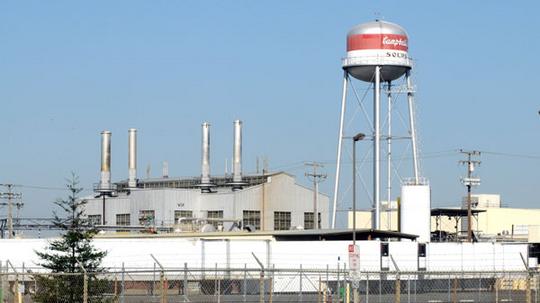
The Sacramento Municipal Utility District has reorganized ownership of four of its gas-fired power plants into one entity, which will allow the electric utility to put more resources toward its goal of being a zero-carbon electric utility by 2030.
SMUD got approval from the California Energy Commission last month to take ownership of two of the cogeneration plants that had been built to service the now-closed Campbell Soup Co. and the existing Proctor & Gamble Co. plants in South Sacramento.
Those two generating plants, and two others in the south area, had each been organized as individual joint power authorities and stand-alone limited liability companies more than 20 years ago. Now that the bonds are paid off on all those plants, SMUD is putting them under a single entity, which will make the reporting, accounting and administration of the four plants more streamlined, said Ross Gould, superintendent of power generation with SMUD.
“We free up manpower to focus on new projects,” he said, adding that the new projects include ways to get SMUD to 100% renewable power in nine years.
In the 1990s, SMUD worked with Camden, New Jersey-based Campbell Soup (NYSE: CPB) and The Procter & Gamble Co. (NYSE: PG) to offer their local operations help to make them more viable.
“They were struggling economically, and they needed technology to operate more efficiently,” Gould said. SMUD installed cogeneration plants that offered those companies power and steam at lower prices.
The Campbell cogeneration plant is currently a 180-megawatt generating station. It was completed in 1997 to support Campbell’s soup factory in South Sacramento, where it provided that commercial kitchen and cannery with 5 megawatts of power as well as excess steam from generation that was used in the factory’s operations. Campbell shut down the soup plant in 2012.
The P&G SMUD cogeneration plant still sends steam to the factory next door. That cogeneration plant is 130 megawatts and it has an emergency load peak-period generating plant capable of generating another 50 megawatts of power.
Those plants are now under the same umbrella as a 500-megawatt Cosumnes power plant SMUD operates in Rancho Seco, and a 57-megawatt cogeneration power station near the wastewater treatment plant in South Sacramento.
SMUD plans to try to stop using all but the 500-megawatt plant over the next five years, replacing their power output with renewables and battery storage. Rather than being dismantled, those plants will likely be mothballed in case they become necessary.
The 500-megawatt plant is a more difficult situation, Gould said. “We’ve got more questions than answers at Cosumnes.”
That plant is tied into the regional and Western states' grid and is part of SMUD’s load-sharing capacity with other utilities.
SMUD’s board of directors this spring set an ambitious goal of zero carbon by 2030. Officials with the utility believe it can get 90% of the way there with existing technology, but the last 10% will depend on new technologies developed in the next eight years. Part of that plan includes eliminating or fundamentally changing the fuel source for natural gas-fired generating plants.









